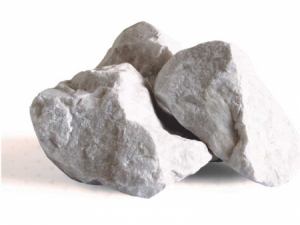Talc is a clay mineral composed of hydrated magnesium silicate and occurs as foliated and platy with the chemical formula Mg3Si4O10(OH)2. According to the Mohs scale of mineral hardness, this mineral is at the bottom of the scale (value 1) and is the softest mineral which can be scratched by fingernail. Talc sheets are flexible but non-resilient. it is not a good heat conductor and as touched, it feels like oily. its colors are light to dark green, brown, white, grey, yellow and blue. this mineral is not dissolved in water, but is dissolved in acidy minerals and is not melted in flame.
Talc is naturally greasy caused by the presence of Magnesium. however, talcs having limestone and carbonate veins (between 0.5 to 5%), are drier and less flexible (due to less fat). so, are less price in industries. as contacted with a little Hydrochloric acid or Solphoric acid, if contains limestone, boiling indicates impurity. the less the boiling, the more valuable (in terms of price) it would be. white (light) talc are much more expensive than dark one. however, talc type (with respect to being light, dark, pure or impure) is important in industries.
Talc powder is used in building paints, industrial and automobile coatings, polymer and plastic making, electric cables, natural rubber, ceramics, lubricants and greasy materials, soap, paper, cosmetics and hygienic products, lubricant products, welding and metalworking indicators, ceramic and glazing, chemical fertilizers and materials in agriculture, animal husbandry, textile industry, grease production, pharmaceuticals, dynamite preparation and explosives, sealing, priming, glasswork , etc.

